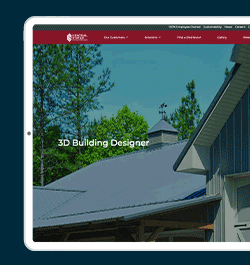UP TO THE MINUTE
Promote Wellness in the Workplace

By John Kenney, Cotney Consulting Group.
The U.S. Centers for Disease Control and Prevention encourages employers to engage their employees in health and wellness.
By engaging in their own wellness, employees tend to work more productively, have less stress, and have a better quality of life. They benefit from a lower risk of injury, disease, and illness. They also have a greater likelihood of contributing positively to their communities.
Research is underway involving other types of wellness benefits to uphold work-life balance and improve overall health. This includes recognition for their good work, leadership training, paid time off, and involvement in community volunteer projects that can improve well-being and engagement in the workplace.
Getting employees engaged involves creating a sincere interest in living healthy at home and work. There is more to a wellness program than giving employees an activity that leads to an incentive or helps them avoid a financial penalty. Such programs are only as effective as the employees who join the program.
Get employees engaged
Engagement is the level of enrollment and sustained participation in a program, including:
- Wellness events, such as volleyball games, walks, nutrition and resilience programs
- Services such as health coaches and blood pressure screenings
- Resources, including learning modules, online assessments, and training programs
Employees who actively participate make healthier food choices, quit tobacco, exercise regularly, and manage stress.
How to achieve engagement
Provide your managers with the right tools to create a holistic and multi-faceted approach to wellness. With a comprehensive culture of health and well-being, you not only address your individual employees’ health risks but also address:
- Corporate values
- Training and leadership
- Relationship to the work environment
Tailor your program to create value for the participants and your company. Conduct surveys on interests and needs, conduct interviews and create focus groups. These are all ways to understand what is essential to your employees. Ask what kind of rewards employees would enjoy most. That may be gift cards, water bottles, or other incentives to get employees to attend events or take your survey.
Ask employees what motivates them to make healthy changes in their life. Successful engagement is very much dependent on good communication. That is why focus groups can be so beneficial. They can provide you with information on the best methods to use to get participation in a wellness program.
Use various strategies to involve employees, which will increase participation.
How to engage employees:
- Get employee input by creating a wellness committee.
- Develop a survey to get employee needs and interests
- Conduct interviews and establish focus groups
- Secure support from company leadership
- Develop a strategic communication plan
- Design and review a benefits plan
- Complete a worksite health evaluation
- Review organizational policies
- Identify community partners
- Come up with a strategy for evaluating your wellness program
Your wellness program can be online, on-site, by phone, or combined. The bottom line is that creating a healthy environment benefits everyone.
About John Kenney
John Kenney is the Chief Executive Officer at Cotney Consulting Group. Prior to starting Cotney, John had 45 years of experience in the construction industry. John began his career by working as a roofing apprentice at a family business in the Northeast. Because of his skill and hard work, he progressed from roofing laborer to foreman, estimator, chief estimator, Vice President, and Chief Operating Officer with his various companies. John has worked for multiple Top 100 Roofing Contractors and is intimately familiar with all aspects of roofing production, estimating, and operations. In his last role, John was responsible for the daily operations and performance of a large commercial roofing contractor. During his tenure, John ran business units associated with delivering excellent workmanship and unparalleled customer service while ensuring healthy net profits for his company.



















Comments
Leave a Reply
Have an account? Login to leave a comment!
Sign In